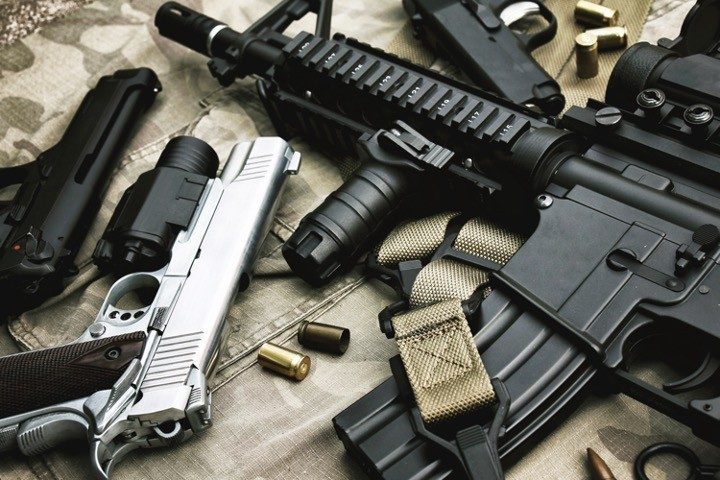
Upon learning that one of the lawsuits (Harrel v. Raoul) filed to challenge Illinois’ ban on the possession of what it calls “assault weapons” was denied by the Supreme Court last week, Lawrence Keane, senior vice president of the Firearm Industry Trade Association (NSSF — formerly the National Shooting Sports Foundation), expressed his disappointment:
We are disappointed the U.S. Supreme Court chose not to accept this challenge at this time to what is clearly an unconstitutional law.
The Modern Sporting Rifle — or AR-15-style rifle — is the most popular-selling centerfire rifle in America, used for lawful purposes every day. That includes recreational target shooting, hunting and self-defense.
These rifles are clearly “Arms” that are protected by the Second Amendment for law-abiding citizens to keep and bear.
The Ban
The ban was enacted in January 2023, using the Highland Park massacre as its excuse. It explicitly and repeatedly misused the term “assault” weapons to include semiautomatic firearms, and a lower court bought the canard.
The Appeal
The appeal, brought in February 2024, presented three simple questions for the high court to consider:
(1) Whether the Constitution allows the government to prohibit law-abiding, responsible citizens from protecting themselves, their families, and their homes with semiautomatic firearms that are in common use for lawful purposes.
(2) Whether the Constitution allows the government to prohibit law-abiding, responsible citizens from protecting themselves, their families, and their homes with ammunition magazines that are in common use for lawful purposes.
(3) Whether enforcement of Illinois’s semiautomatic firearm and ammunition magazine bans should be enjoined.
Although other lawsuits challenging the ban were still pending, an argument was made for the high court to intervene anyway:
Although Petitioners are coming to the Court on an interlocutory basis, the current state of the courts of appeals on this issue and the patently erroneous nature of the decision below provide good reasons for this Court to take this case now and settle these issues once and for all.
Indeed, the Seventh Circuit’s opinion virtually guarantees that nothing will be gained by waiting for final judgment.
The Ruling
The Seventh Circuit’s ruling was made in November by a three-judge panel made up of Reagan and Trump nominees. Nevertheless, they bought the lie that the Second Amendment contains some sort of distinction between “military” and “civilian” firearms. Once that was sold, it was all downhill from there:
The present cases, which we have consolidated for disposition [here], relate to the types of “Arms” that are covered by the Second Amendment.
This presents a line-drawing problem.
The State of Illinois sold the lie, and the “conservative” judges bought it:
The State of Illinois, in the legislation that lies at the heart of these cases, has decided to regulate assault weapons and high-capacity magazines — a decision that is valid only if the regulated weapons lie on the military side of that line and thus are not within the class of Arms protected by the Second Amendment.
It was then easy for the three blind mice to side with the state:
Using the tools of history and tradition to which the Supreme Court directed us in Heller and Bruen, we conclude that the state and the affected subdivisions have a strong likelihood of success in the pending litigation.
We therefore affirm the decisions of the district courts in appeals … refusing to enjoin these laws, and we vacate the injunction issued by the district court in [their] appeals.
The High Court’s Denial; Justice Thomas’ Dissent
For the high court to take on such a case, four justices must agree. Justice Clarence Thomas could find only one other to support the request to review: Justice Samuel Alito.
Thomas dissented from the majority’s decision to deny review until the lower courts have ruled on the matter:
The Court of Appeals for the Seventh Circuit rejected petitioners’ request for a preliminary injunction, concluding “that the AR-15 . . . is not protected by the Second Amendment.”
According to the Seventh Circuit, the rifle selected by millions of Americans for self-defense and other lawful purposes does not even fall within the scope of the Arms referred to by the Second Amendment.
This Court is rightly wary of taking cases in an interlocutory posture.
But I hope we will consider the important issues presented by these petitions after the cases reach final judgment.
He then laid some groundwork that he hopes will succeed in persuading at least four justices to review the case:
The Seventh Circuit’s decision illustrates why this Court must provide more guidance on which weapons the Second Amendment covers.
By contorting [twisting] what little guidance our precedents provide, the Seventh Circuit concluded that the Second Amendment does not protect “militaristic” weapons.
It then tautologically defined “militaristic” weapons as those “that may be reserved for military use.”
The Seventh Circuit’s contrived “non-militaristic” limitation on the Arms protected by the Second Amendment seems unmoored from both text and history….
And, even on its own terms, the Seventh Circuit’s application of its definition is nonsensical.
Thomas quoted himself from a previous ruling: “The AR-15 is a civilian, not military, weapon. No army in the world uses a service rifle that is only semiautomatic,” then ended his dissent with this:
In my view, Illinois’ ban is highly suspect because it broadly prohibits common semiautomatic firearms used for lawful purposes.
It is difficult to see how the Seventh Circuit could have concluded that the most widely owned semiautomatic rifles are not “Arms” protected by the Second Amendment.
These petitions arise from a preliminary injunction, and the Seventh Circuit stressed that its merits analysis was merely “a preliminary look at the subject.”
But, if the Seventh Circuit ultimately allows Illinois to ban America’s most common civilian rifle, we can — and should — review that decision once the cases reach a final judgment.
The Court must not permit “the Seventh Circuit [to] relegat[e] the Second Amendment to a second-class right.”
Such an opportunity could be years into the future. In the meantime, thanks to the high court’s niggling over whether it should intervene (or not) while lower courts inch their way through the legal maze to the ultimate proper conclusion, law-abiding Illinois citizens possessing these firearms now face serious threats for owning what the state has declared to be illegal firearms.
Related article:
Pro-gun Group Asks SCOTUS to Review Illinois “Assault Weapons” Ban



